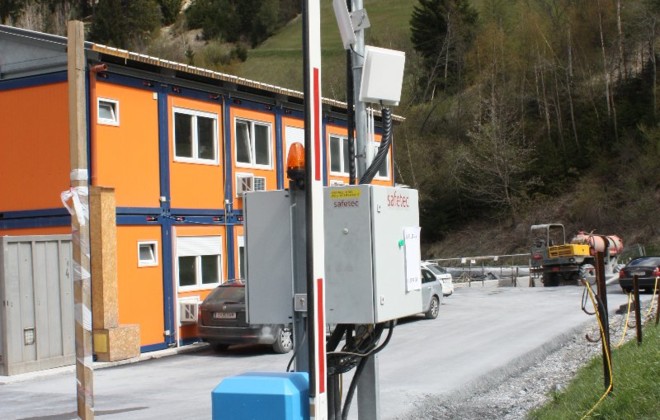Access Tunnel Wolf
|
Client: |
Swietelsky / Swietelsky Tunnelbau consortium |
|
Location: |
Austria |
|
Construction period: |
12/2013 - 10/2017 |
|
Executing companies: |
RK safetec |
| Contract value: | 290,000 EUR |
The Brenner Base tunnel (BBT) connects Austria to Italy. The 55km section between Innsbruck and Franzensfeste, is connected to the Innsbruck bypass in which the BBT runs out, which can be regarded as the longest uninterrupted underground railway tunnel, with a total length of 64km.
This 104 Million Euro project was awarded to the Swietelsky/Swietelsky Tunnel construction (Tunnelbau) joint venture in Fall 2013. Preparation works in the access tunnel at Wolf started on the 4th of December 2013 and the section was successfully completed in 2017. Blasting excavation works in the 3.257 m long Wolf access tunnel with a cross-section of 120 m² were performed from December 2013 till November 2015. The track inside the tunnel has a height difference of at least 400m and branches off at St. Jodok into a 280 m² cross-section cavern. The access tunnel’s lining and the concrete travelling surface are currently under construction.
During the second phase, an additional 1.2 km exploratory tunnel in the direction of Brenner south, a cavern which branches off, as well as a connection tunnel were added.
Services
- Access controls at 4 cabinet centers
- Video surveillance at the cabinet centers and in the tunnel
- Area-wide 70 cm fire department wireless communication system inside the tunnel
- Wide coverage Wifi inside the tunnel as well as across the entire construction site
- Locating staff inside the tunnel using a zone grid of 500m
- Audible and visual alarm system inside the tunnel
- Emergency telephones inside the tunnel
Magnitude of services
- 22 Cable distribution cabinets
- 22 Emergency telephones
- 29 Access points
- 26 RFID Readers
- Approximately 20 km of fibre optic cables
- 5 Remote units (70 cm)









